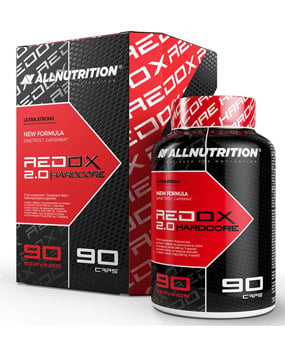D-Aspartic Acid -> a poziom LH & Testosteronu
A)

The researchers gave a couple of dozen men aged between 27 and 37 a daily dose of 3.12 grams D-aspartic acid for twelve days consecutively. Twenty other men were given a placebo. The testosterone level in the subjects that received the supplement had risen by 33 percent after the twelve days,
http://www.ergo-log.com/dasparticacidtestosterone.html
suplementacja DAA w ilosci 3,12g przez 12 dni spowodowaly wzrost poziomu testosteronu o 33% w porownaniu do grupy placebo
B)

When rats drank a solution of 20 mM sodium D-aspartate for 12 days, the concentration of LH and testosterone in the serum increased significantly. After treatment, the level of LH in the rats' serum was increased by 51% compared with that of the controls. From a mean LH value of 3.7 ± 0.3 mIU/ml for the controls, it increased to a value of 5.6 ± 0.4 mIU/ml, a 1.51-fold increase (p < 0.001) (Table 2). Three days after the suspension of the treatment, LH concentration still remained increased compared with the control rats but the difference was not statistically significant (Table 2).
http://www.ncbi.nlm.nih.gov/pmc/articles/PMC2774316/
grupa szczorow ktorym podawano roztwor zawierajacy NMDA (N-metylo-D-asparaginian - organiczny związek chemiczny z grupy aminokwasów, metylowa pochodna kwasu asparaginowego) zanotowala wzrost stezenia LH o 51%
natomiast wzrost poziomu testosteronu o ponad 100%
Badania 2:
DAA-> a poziom testosteronu, DHEA & IGF-1
A)
34% wzrost poizomu testosteronu w ciagu 24h!

Placebo or NMDA was ingested prior to training with blood test occurring 2 hours after dosing. 75 mg of l-Glutamine powder (placebo) was used on day one and 75 mg of NMDA (D-Aspartic Acid) was used on day two. (No other pre workout supplements were taken in combination with these ingredients. Test subject was not informed (blind study) on which day he was to receive the placebo or real NMDA supplement. Test subject was screened for taking hormone increasing supplements and other criteria prior to testing. For additional insight, both IGF-1 (somatomedin c) and DHEA (dehydroepiandrosterone) were added to the second day blood testing panels.
TESTOSTERONE
Pre vs. post training levels
(-2.25%) drop in testosterone with Placebo
(+12%) increase of testosterone with NMDA
(+14.25%) INCREASE in 2 hours with NMDA vs. placebo
DHEA
11% Increase of DHEA with NMDA use. 174ug/DL vs. 193 ug/DL
IGF-1
12% Increase of IGF-1 with NMDA use. 192ng/ml - 215 ng/ml
tej samej grupie osob w jeden dzien podana l-glutamine\w drugie dzien NMDA
wnioski:
-wzrost poziomu testosteronu o ponad 34% dwie godziny po podaniu NMDA
B)
49% wzrost poizomu testosteronu w ciagu 7dni!

The test subject used NMDA supplement, 3 servings per day, 3 times daily. Each serving contained the following ingredient dosages: D-Aspartic Acid 25mg, Tongkat Ali 100:1 Extract 25mg and Mucuna Pruriens Extract (25% L-Dopa) 25mg. Supplement formula was ingested for six days prior to blood testing. On day 6, subject was tested for baseline blood values of testosterone, (somatomedin c) and DHEA
TESTOSTERONE
Day 7: Pre vs. post training values
(+7%) INCREASE of testosterone in 2 hours with NMDA
Day 1 vc Day 7: Comparative post training values
(+49%) INCREASE of testosterone with NMDA use when comparing post workout testosterone values from Day 1 to Day 7
DHEA
Day 7: Pre vs. post training values
(+20.5%) INCREASE of DHEA in 2 hours with NMDA
Day 1 vc Day 7: Comparative post training values
(+52%) INCREASE of DHEA with NMDA use when comparing post workout testosterone values from Day 1 to Day 7
IGF-1
Day 7: Pre vs. post training values
(+15%) INCREASE of IGF-1 in 2 hours with NMDA
Day 1 vc Day 7: Comparative post training values
(+20%) INCREASE of IGF-1 with NMDA use when comparing baseline (day 1) vs post workout IGF-1 values from (day 7)
http://musclewarfare.com/rnd_s001.html
http://musclewarfare.com/rnd_s002.html
Przez 6 dni grupa spozywala 3x dziennie po 75mg NMDA
wnioski w porownaniu do grupy placebo:
-wzrost poziomu testosteronu o 49%
-wzrost DHEA o 52%
-wzrost IGF-1 o 20%
Badania 3:
DAA-> a poziom hormonów ( in vivo & in vitro )
A)

Since D-Asp occurs at high concentrations in the adenohypophysis as an endogenous natural compound; since this gland responds positively by accumulating this amino acid, we hypothesized it could be involved in the endocrine activity. To verify this, rats were injected with a solution of 0.5 M D-Asp (i.p. injection) to obtain a concentration of 2 µmol/g body weight. After 1 and 5 h, the levels of some adenohypophysial and gonadal hormones were measured in the blood. The results indicated that GH, LH, and the gonadal hormones testosterone and progesterone were significantly increased in the blood in response to D-Asp injection (Table 2 ). One hour after the injection of D-Asp, GH concentration in plasma increased 1.96-fold over basal levels (P<0.01), and after 5 h reached 2.6-fold the basal level (P<0.01) (Table 2) . Similarly, LH increased significantly (2.1- and 2.5-fold over basal level 1 and 5 h after injection, respectively) (Table 2) . Testosterone and progesterone also increased in the blood, but only 5 h after D-Asp treatment was this increase significant. Testosterone rose 3.36-fold higher than the basal serum levels (P<0.01), whereas progesterone increased 2.72-fold (P<0.01). Other hormones—17ß-estradiol, androstenedione, 17-hydroxyprogesterone, cortisol, thyroid-stimulating hormone (TSH), 3,5,3'-Triiodothyronine (T3), and 3,5,3',5'-tetraiodothyronine (T4,)—were not affected by D-Asp injection (Table 2) . The free amino acids L-Asp, D- and L-Glu, D-, and L-Ala, and D- and L-Met were tested under the same conditions as D-Asp; they did not induce any significant increase of the above mentioned hormones (results not shown).
To verify whether D-Asp has a direct effect on the adenohypophysis, experiments in vitro were performed on this isolated gland (see Materials and Methods). These experiments indicate that D-Asp is able to increase the in vitro release of GH, but not of LH (data not shown); the results show that D-Asp is not the direct effector of LH release in vivo, but D-Asp could be the precursor of another molecule, which in turn is directly involved in LH release.
http://www.fasebj.org/content/14/5/699.full.pdf
B)

In 1996, wefirst demonstrated that whenever an adult male rat receivedan i.p. injection of D-Asp, this amino acid accumulated in the adenohypophysis. Such accumulation led to a significant
increase in LH (luteinizing hormone), testosterone, and
progesterone levels in the blood (D'Aniello et al., 1996).
Consistently, we later demonstrated that D-Asp was also
capable of inducing the release of various hormones such as
prolactin (PRL), growth hormone (GH), and LH (D'Aniello et al.,
2000a,b)
http://www.pharmaguida.com/D-Asp_Review definitiva.pdf
Injekcje 2mmDAA spowodowaly
-wzrost poziomu GH z 32 do 82
-wzrost testosteronu z 5,5 do 18,5
-wzrost stezenia prolaktyny z 12 do 30
-wzrost progesteronu z 10,8 do 29,4
w ciagu 5 godzin po podaniu DAA
Badanie 4:
Poziom DAA,GH,LH w ciagu 24h.

Six adult male rats (85 days old) were killed at 10 a.m. and six adult male rats of the same age were killed at midnight. Blood and pituitaries were collected and treated as above for D-Asp, GH, and LH determination. Hormone release was measured directly in the blood. The results are shown in Fig. 7 . A significant difference in D-Asp content in the blood between morning and nocturnal levels is present. During the night, D-Asp concentration in the adenohypophysis was found to be increased nearly twofold compared to that at 10 a.m. (220±30 nmol/g adenohypophysis in the night vs. 114±15 nmol/g during the morning; P<0.01). These events were paralleled by a significant increase in blood of GH and LH concentrations. In fact, as shown in Fig. 7 , blood GH increased 1.76-fold (60±12 ng/ml serum at night vs. 34±5 ng/ml at 10 a.m., P<0.01); LH increased 1.75-fold (5.6±0.8 ng/ml of serum at night vs. 3.2±0.4 ng/ml at 10 a.m., P<0.01)
Jedna grupe szczurow zabito o 10 rano ,druga o polnocy
zmierzono poziom LH,GH i DAA
wnioski:
-o polnocy poziom wszystkim badanych hormonow jak rowniez DAA byl wiekszy o 50-100% niz o 10 rano
Badania 5:
DAA -> a cAMP & cGMP
A)

In vitro experiments carried out on the isolated pituitary gland demonstrated that when the gland is incubated with 0.1 mM D-Asp, a significantly increased (1.8-fold) the synthesis of LH occurs. In fact, whereas the control sample contained an LH value of 250 ± 8 mIU/mg protein, in the sample incubated with D-Asp, the LH concentration rose to 480 ± 11.4 mIU/mg, p < 0.001) (Fig. (Fig.2,2, left
panel). The same effects occurred also when the concentration of D-Asp in the medium was 1.0 mM. In this case the increased LH synthesis was enhanced 2.32-fold (from 250 ± 8 mIU/mg of protein to 580 ± 19.7 mIU/mg) (A, B: p < 0.001; a, b: p < 0.02), but the increase was not proportionate to the concentration of D-Asp (Fig. (Fig.2,2, left panel). In this experiment we also
measured the concentration of cAMP and cGMP in the medium in which the pituitary gland was incubated with D-Asp and found that the concentration of cGMP was significantly increased. A concentration of 0.1 mM D-Asp in 60 min of incubation induced a significant increase in the synthesis of cGMP it raised 2.5-fold, from a value of 1.0 ± 0.2 pmol/mg tissue to 2.5 ± 0.4 pmol/mg tissue (Fig. (Fig.2,2, right panel). D-Asp at the concentration of 1.0 mM in the medium induced a 3.1-
fold increase in the synthesis of cGMP (A, B and C, D: p < 0.0001) (Fig. (Fig.2,2, right panel). However,
the increase was not proportional to D-Asp concentration, thus indicating that the minimum concentration of 0.1 mM is already sufficient to stimulate the pituitary to synthesize cAMP; this is similar to the effects of other described molecules on the pituitary gland
B)

When Leydig cells obtained from rat testes were incubated with 0.1 mM D-Asp, there was a significant 2.4-fold increase in the synthesis of testosterone. From a basal value of 34 ± 3 ng testosterone/106 in Leydig cells, after D-Asp treatment, testosterone was raised to 82 ± 3 ng/106 cells (A, B: p < 0.001) (Fig. (Fig.3,3, left panel). When the concentration of D-Asp was 1.0 mM in the
medium, the increase was 2.94-fold compared with the control (C, D: p < 0.001) (Fig. (Fig.3,3, left
panel). Thus, as occurred with LH synthesis in the pituitary gland, in Leydig cells the concentration of 0.1 mM D-Asp also induced testosterone synthesis significantly. We looked for the action of D-Asp on the second messenger and found that following treatment of Leydig cells with 0.1 mM D-Asp, cAMP was increased 3.1-fold compared with the control. When D-Asp was administered at a levels of 0.1 mM in the medium, from a value of 20 ± 3.0 pmol/106 in Leydig cells in the control, cAMP rose to 62 ± 8.1 pmol/106 (p < 0.001) (Fig. (Fig.3,3, right panel). When D-Asp
was administered at a level of 1.0 mM in the medium, a 5.25-fold increase was observed (20 ± 3.0 pmol/106 compared with 105 ± 3.3 pmol/106 after stimulation) (p < 0.0001) (Fig. (Fig.3,3, right
panel). These results thus mirrored the previously reported data in which it was demonstrated that the stimulation of Leydig cells is accompanied by an increase in cAMP
C)

Lastly, it has been shown that if D-Asp is
injected into live animals or added to incubation media of
cultured neurons, it will trigger an increase in cAMP .
http://www.rbej.com/content/7/1/120
cAMP- cykliczny AMP z ATP, którego jednym z efektów na tkanki jest pobudzenie tarczycy do wytwarzania tyroksyny, która pobudza rozpad tłuszczu. Podwyższony poziom cAMP pobudza kinazy białkowe, które to z kolei pobudzają lipazy hormonalnie aktywną (HSL) w wybranych tkankach. cAMP daje również sygnał do produkcji hormonu luteinizującego (LH), którego podnoszące testosteron u samców właściwości zostały udowodnione naukowo. Podwyższony poziom cAMP i LH stymuluje znaczny wzrost użycia komórek tłuszczowych jako źródła energii i silne powiązanie w zwiększaniu produkcji testosteronu.
Badania 6:
DAA i ARGININA -> a poziom testosteronu!

To verify the exogenous effects of D-Asp and L-Arg, a precursor of NO, on testicular testosterone release, we incubated slices of duck testes for 60 and 120 min in a medium containing either D-Asp or L-Arg (Figure 4). As expected, D-Asp induced a significant increase in testosterone, whereas L-Arg caused a decrease. Specifically, after a 60-min incubation with D-Asp, testosterone synthesis was higher than that of control (2.0 mM [p < 0.01] and 1.0 mM [p < 0.05]). Similarly, after 120 minutes of incubation, the increases were significantly higher than those of control (1.0 mM and 2.0 mM D-Asp concentration [p < 0.01]). Furthermore, when the exogenous stimulation was absent, we noted that testosterone production at 120 min was approximately 2-fold higher than that at 60 min. In fact, although a 60-min incubation with D-Asp yielded higher testosterone values, the proportionate increase at 120 min appeared approximately identical to that of control.
Incubations with L-Arg yielded a decrease in testosterone levels after 120 min at 1.0 mM (p < 0.05) and after 60 and 120 min of incubation at 2.0 mM (p < 0.01), as compared to controls.
http://www.rbej.com/content/6/1/28
3 grupy
-placebo
-grupa ptrzyjmujaca arginine
-grupa przyjmujaca DAA
badano wplyw tych substancji na poziom testosteronu w porownaniu do grupy placebo
wnioski:
-suplementacja arginina spowodowala spadek poziomu testosteronu
-suplementacja DAA spowodowala wzrost poziomu testosteronu w prownaniu do grupy placebo jak i grupy przyjmujacej arginine
Zmieniony przez - solaros w dniu 2011-02-07 16:35:37
"Cóż jest trucizną?
Wszystko jest trucizną i nic nie jest trucizną, tylko dawka czyni, że dana substancja nie jest trucizną!".
BLOG: http://www.sfd.pl/t1033576.html


 Krzysztof Piekarz
Krzysztof Piekarz







